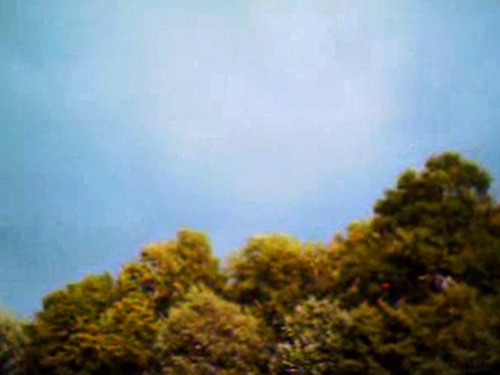
In Because We Are Visual Olivia Rochette and Gerard-Jan Claes immerse themselves into the world of public video journals. The Internet and its online communities intend to bring people closer together and to connect them. Yet, surprisingly, it seems that the virtual world confronts these so-called vloggers more than ever with their own loneliness. This documentary allows the viewer to discover this contemporary phenomenon and focuses on the experience of the body within this virtual space. By means of visual material gathered from online sources, the cineastes create a unique poetic realm in which thoughts, fears, desires and worries, shared via the webcam, merge together.1
Marie Lechner: Il y a des personnages récurrents, une fille amoureuse d’une autre, distante, une fille qui se saoule devant sa caméra… Qu’est ce qui vous touchait ?
Olivia Rochette et Gerard-Jan Claes: Leur honnêteté, elles s’exposent si ouvertement. Nous ne nous intéressions pas seulement à ce qu’elles disaient, mais à la façon dont elles le disaient. Il y a quelque chose de très beau et délicat. Ces personnes évoquent leur vie quotidienne, les habits, les cheveux ébouriffés, l’amour, la solitude, tout le monde peut s’y reconnaître.
Marie Lechner en conversation avec Olivia Rochette et Gerard-Jan Claes2
« L’exploration de cette impudeur abandonnée sur le Net, mais que personne ne regarde vraiment, dessine la cartographie d’une constellation de solitudes, où se devine même parfois un hors-champ violent et désespéré. Mais malgré les conventions du genre […], c’est un véritable écho émotionnel qui sourd de ce montage d’images trouvées. »
Joachim Lepastier3
“Alone together, at last. We know we are being watched, but we don’t mind. If this is what it takes to prove we exist, to feel we belong, bring it on. We’re scared and confused, but that’s ok, because we know you are too: after all, you’re not that different anyway. Our cams are always there, almost always on. We can feel the eagerness of your gaze, but still we remain the same – “for real” – locked in our bittersweet solitude, with our bodies sealed in signs. Rather than continue to be victims of the image, we decide to become image. Because we want to be seen. Because we are visual.”
Stoffel Debuysere4
- 1From Olivia Rochette’s and Gerard-Jan Claes’ website.
- 2Olivia Rochette et Gerard-Jan Claes, « Un miroir dans lequel les gens s’examinent et s’exhibent », entretien par Marie Lechner, Libération, 19 janvier 2011.
- 3Joachim Lepastier, “Brive trouve toujours les moyens,” Cahiers du Cinéma, 668 (2011): 77.
- 4Stoffel Debuysere, “Because We Are Visual”.

